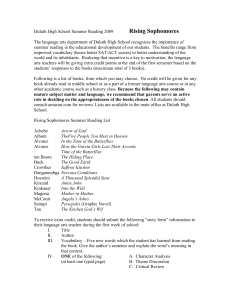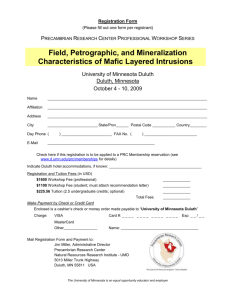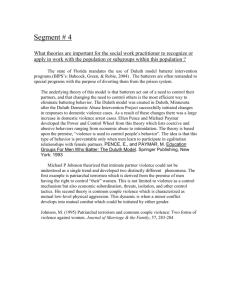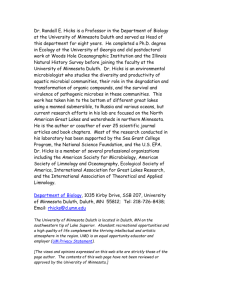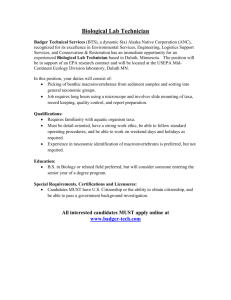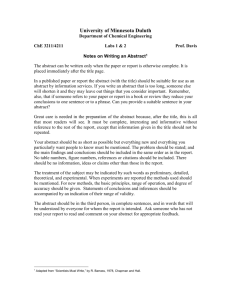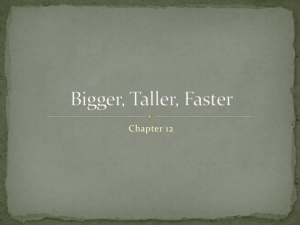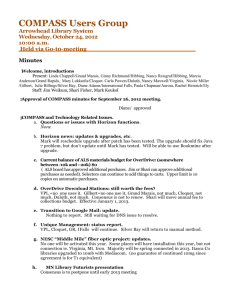Building a Coordinated Community Response to Domestic Violence
advertisement
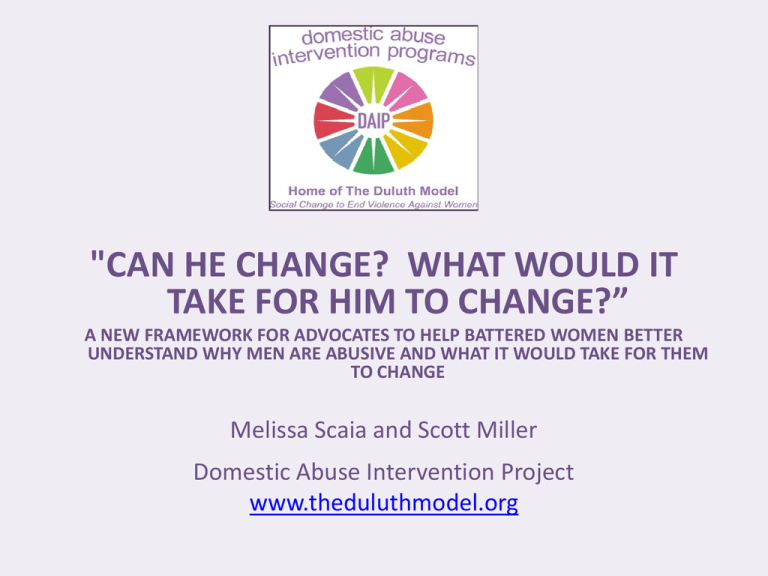
"CAN HE CHANGE? WHAT WOULD IT TAKE FOR HIM TO CHANGE?” A NEW FRAMEWORK FOR ADVOCATES TO HELP BATTERED WOMEN BETTER UNDERSTAND WHY MEN ARE ABUSIVE AND WHAT IT WOULD TAKE FOR THEM TO CHANGE Melissa Scaia and Scott Miller Domestic Abuse Intervention Project www.theduluthmodel.org The Duluth Model The Duluth Model is an organizing method that prioritizes victim safety and offender accountability within a social change framework. The model guides organizers to build interventions within systems that are aligned with the lived experience of victims. The Duluth Model creates a distinctive form of organized public responses to domestic violence. It is characterized by: Clearly identifiable and largely shared assumptions and theories about the source of battering and the effective means to deter it. Empirically tested intervention strategies that build safety and accountability into all elements of the infrastructure of processing cases of violence. Well defined methods of inter-agency cooperation guided by advocacy programs. Core Principles of Social Change of the Duluth Model Approach Create and experience that is liberating rather than dominating Engage in dialogue vs. counsel and advise Approach as a social problem vs. a problem with an individual Include those subject to the oppression in the organizing to change the conditions under which they live The Duluth Model Approach Coordinated Community Response (CCR) Individual Advocacy & Shelter 911 Probation Prosecution Courts Law Enforcement Jail Restorative Justice Sentencing & Restorative Circles Men's NonViolence Program What is the need that this videoconference is trying to address? Battered women want to understand why the men who say they love them are also violent, hurtful and abusive to them. Battered women often ask, • Why does he hurt me? • Why does he do this to me? • Do you think he could change?” Or they say, • “He promised he wouldn’t hurt me anymore. I don’t think he’ll do it again.” Themes of the Duluth Model Men’s Non-Violence Curriculum Nonviolence Physical Violence Responsible Parenting Using Children Nonthreatening Behavior Using Intimidation Shared Responsibility Using Male Privilege Respect Using Emotional Abuse Economic Partnership Using Economic Abuse Trust and Support Using Isolation Sexual Respect Sexual Abuse Honesty and Accountability Minimizing, Denying and Blaming Negotiation and Fairness Using Coercion and Threats Tools of the Duluth Model Men’s Non-Violence Curriculum The Equality Wheel Women’s Perspective Video The Power and Control Wheel Group Exercises/Dialogue The Control Log Role-Plays The Equality Log Assignments Group Dialogue: The Medium of Learning Lesson Plans for the Three Parts of each Theme Male/Female Co-Facilitation Facilitating a Men’s Nonviolence Class Videos Video Vignettes Control Log from the Duluth Model Creating a Process of Change for Men Who Batter curricula • an essential teaching and analysis tool of the Creating a Process of Change for Men Who Batter curriculum • is designed to facilitate an analysis of six key elements of abusive behaviors and then to identify how men can be non-violent and non-controlling in intimate partner relationships with women. Control Log Actions Intents Beliefs Feelings Minimization, Denial, and Blame Effects On you On her On others Past Violence Noncontrolling Behaviors Adapting the Control Log for use with Battered Women by Advocates • The Domestic Abuse Intervention Program (DAIP) staff in Duluth, MN has taken the control log for working with men who batter and adapted it for use by advocates to utilize when helping battered women understand and answer the questions, “Why is he violent? Will he change?” • This new tool can be used when meeting with battered women one-on-one or in a group setting • See accompanying handouts Upcoming Webinars / Videoconferences hosted by “the Duluth Model” • Why Traditional Parenting Classes Don’t Work with Men Who Batter • Adapting the “Equality Log” from the Duluth Men’s NonViolence Program for use with Battered Women by Advocates • The Duluth Model’s Coordinated Community Response: An Introduction • Collusion – What Does It Look Like in a Men’s Non-Violence Program? • Only $20 per site Resources Domestic Abuse Intervention Programs www.theduluthmodel.org Domestic Violence Turning Points/Advocates for Family Peace www.dvturningpoints.com www.stopdomesticabuse.org Battered Women’s Justice Project www.bwjp.org Casa de Esperanza www.casadeesperanza.org Mending the Sacred Hoop Technical Assistance Project www.msh-ta.org Praxis International www.praxisinternational.org
